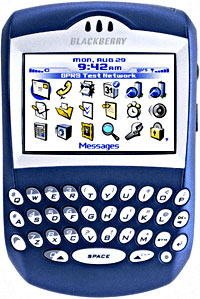 Like the Black Knights in Monty Python’s ‘Holy Grail,’ PDAs are refusing to be beaten, despite almost monthly declarations of their impending obsolescence.
Like the Black Knights in Monty Python’s ‘Holy Grail,’ PDAs are refusing to be beaten, despite almost monthly declarations of their impending obsolescence.
Far from shuffling off into that big technology dustbin in the sky (or, more likely, some landfill site somewhere), Personal Digital Assistants managed to register the highest PDA shipment total of any second quarter on record.
The new research from Gartner saw PDA shipments totalling 3.7 million units in the second quarter of 2006, up 2.7 percent from the second quarter of 2005.
Much of the growth is coming from GPS-enabled new kids on the PDA block like Mio Technology, Motorola and Danger Research, while old boys like Research In Motion (RIM), Palm, Hewlett-Packard and Dell all saw steadily declining shipments.
When it comes to PDA operating systems, Microsoft’s Windows Mobile kept pushing ahead with 54.2 percent of PDA OS shipments, followed by RIM OS with 22.5 percent of the market and Palm OS with 13.4 percent.
“The ongoing integration of WAN technology into PDAs, and the marketing push of these devices by wireless operators has produced most of the growth compared to one year ago,” said Todd Kort, principal analyst in Gartner’s Computing Platforms Worldwide group.
Although shipments are up, revenues are down, as Kort explained: “The average selling price of PDAs fell by 6 percent from one year ago to $373, mostly due to aging product lines, the increasing impact of wireless operator subsidies and relatively few new PDAs being launched thus far in 2006.”
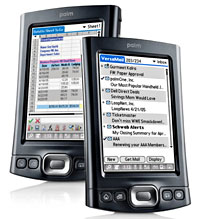 This explains how worldwide PDA end-user revenue fell by 4.1 percent last year to $1.38 billion in the second quarter of 2006.
This explains how worldwide PDA end-user revenue fell by 4.1 percent last year to $1.38 billion in the second quarter of 2006.
The report breaks down PDA shipments by manufacturer, Q2 2006 shipment estimates, market share and 2Q05- 1Q06 growth.
Research In Motion 830,720 shipments, 22.5% market share, -1.1% growth
Palm 470,458 , 12.7%, -26.7%
Hewlett-Packard 382,653, 10.4% -15.1%
Mio Technology 303,377, 8.2% 65.4%
Nokia 163,600, 4.4%, -40.5%
Others 1,545,596, 41.8%, 27.8%
It’s worth noting that these totals don’t include smartphones, such as the hugely popular Palm Treo phones (which shifted 656,000 units over the same quarter) and BlackBerry 71xx (467,000 units excluded), but include cellular PDAs, such as the iPAQ 69xx and Nokia E61.
Which rather makes the results a bit confusing to our eyes.
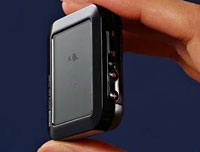 When it comes to convergence, we’re always on the look out for shiny new smartypants devices, even if we’re not always totally convinced about their usefulness.
When it comes to convergence, we’re always on the look out for shiny new smartypants devices, even if we’re not always totally convinced about their usefulness.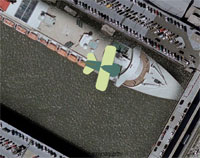 We love it when people adapt
We love it when people adapt  Still, as an office timewaster it’s second to none, and well worth a go.
Still, as an office timewaster it’s second to none, and well worth a go.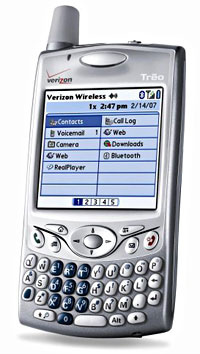 For a self confessed, gimme-gimme-shiny-new gadgets nutcase like me to be using a phone several years old speaks volumes of the strengths of the Treo 650.
For a self confessed, gimme-gimme-shiny-new gadgets nutcase like me to be using a phone several years old speaks volumes of the strengths of the Treo 650.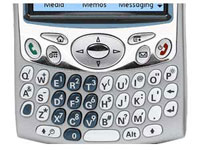 If I’d have taken my Windows Mobile phone I dare say I would have been very well acquainted with stylus (and the reset button) by this time, but the Treo’s fabulous one-handed operation and rock solid performance made it a practical laptop replacement.
If I’d have taken my Windows Mobile phone I dare say I would have been very well acquainted with stylus (and the reset button) by this time, but the Treo’s fabulous one-handed operation and rock solid performance made it a practical laptop replacement. Palm has remained tight-lipped about their European product roadmap, with the web rife with rumours of both Windows and Palm new models going under ggroovy codenames like Hollywood, Lowrider, Nitro and Lennon.
Palm has remained tight-lipped about their European product roadmap, with the web rife with rumours of both Windows and Palm new models going under ggroovy codenames like Hollywood, Lowrider, Nitro and Lennon.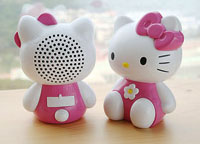 We can always rely on Brando to come up with quirky, bizarre and sometimes near-scary products, so we thought we’d take a look at their latest range of USB speakers.
We can always rely on Brando to come up with quirky, bizarre and sometimes near-scary products, so we thought we’d take a look at their latest range of USB speakers. Mouse speakers
Mouse speakers Where did you get those ears from?
Where did you get those ears from? Apple sounds
Apple sounds Prestige-hunting iPod owners keen to get one up on their mates need look no further than this rather remarkable iBlueTube valve amplifier, available from Japanese tech company, Thanko.
Prestige-hunting iPod owners keen to get one up on their mates need look no further than this rather remarkable iBlueTube valve amplifier, available from Japanese tech company, Thanko.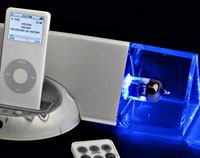 The iPod docks in the centre of the mains powered unit, with the power being supplied via a disappointimgly dull looking, hefty black external power block.
The iPod docks in the centre of the mains powered unit, with the power being supplied via a disappointimgly dull looking, hefty black external power block. The 295×130×68mm valve amp pumps out a modest 2 x 12W output, with a frequency range of 20Hz – 30Khz (+0dB -3dB), and a claimed 80dB signal-to-noise ratio.
The 295×130×68mm valve amp pumps out a modest 2 x 12W output, with a frequency range of 20Hz – 30Khz (+0dB -3dB), and a claimed 80dB signal-to-noise ratio.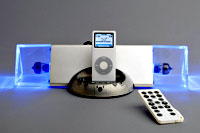 As many a beard stroking hi-fi hugger will tell you, you’ll only get real hi-fi when you’re using the best source components available, and we certainly wouldn’t put an iPod up there with Linn Sondek turntables and Cyrus CD players.
As many a beard stroking hi-fi hugger will tell you, you’ll only get real hi-fi when you’re using the best source components available, and we certainly wouldn’t put an iPod up there with Linn Sondek turntables and Cyrus CD players.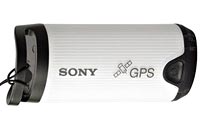 Sony Electronics have announced a groovy new GPS device that lets you add time and location information to pictures and movies captured with their digital still cameras or camcorders.
Sony Electronics have announced a groovy new GPS device that lets you add time and location information to pictures and movies captured with their digital still cameras or camcorders. Armed with this info, users can fire up the new Picture Motion Browser software that comes with the latest Sony cameras and camcorders, and see their photo locations as push pins on an online mapping website, powered by Google Maps (we’ve no idea if this software will also be made available to non Sony users.)
Armed with this info, users can fire up the new Picture Motion Browser software that comes with the latest Sony cameras and camcorders, and see their photo locations as push pins on an online mapping website, powered by Google Maps (we’ve no idea if this software will also be made available to non Sony users.)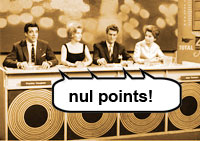 UK banks may be gleefully reporting big fat profits every quarter, but new research from eService provider Transversal claims that online customer service from Britain’s banks has sunk to an all time low.
UK banks may be gleefully reporting big fat profits every quarter, but new research from eService provider Transversal claims that online customer service from Britain’s banks has sunk to an all time low. Of the forty per cent that bothered to provide an email address, there was clearly no rush to answer their customers’ questions, with the banks taking a leisurely average of 22 hours to respond.
Of the forty per cent that bothered to provide an email address, there was clearly no rush to answer their customers’ questions, with the banks taking a leisurely average of 22 hours to respond. UK regulator Ofcom is looking at plans to introduce high speed Internet access to broadband-starved remote areas by boosting the power of Wi-Fi signals.
UK regulator Ofcom is looking at plans to introduce high speed Internet access to broadband-starved remote areas by boosting the power of Wi-Fi signals. City networks
City networks Ruckus, who are currently working with Google to test a free mesh network in Mountain View, California, have developed a new Wi-Fi antenna to help home users connect to city networks.
Ruckus, who are currently working with Google to test a free mesh network in Mountain View, California, have developed a new Wi-Fi antenna to help home users connect to city networks.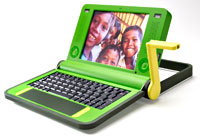 Yesterday, a spokesperson for the One Laptop Per Child (OLPC) programme revealed that Nigeria, Brazil, Argentina, and Thailand have all tendered commitments to purchase one million Linux laptops through the ambitious US-based programme.
Yesterday, a spokesperson for the One Laptop Per Child (OLPC) programme revealed that Nigeria, Brazil, Argentina, and Thailand have all tendered commitments to purchase one million Linux laptops through the ambitious US-based programme. This means that each laptop will be able to talk to its nearest neighbour and create ad hoc, local area networks for sharing data and connections.
This means that each laptop will be able to talk to its nearest neighbour and create ad hoc, local area networks for sharing data and connections. So far, AMD, eBay, Google, Nortel, Red Hat, and a number of other technology companies have all signed up to help support the project
So far, AMD, eBay, Google, Nortel, Red Hat, and a number of other technology companies have all signed up to help support the project